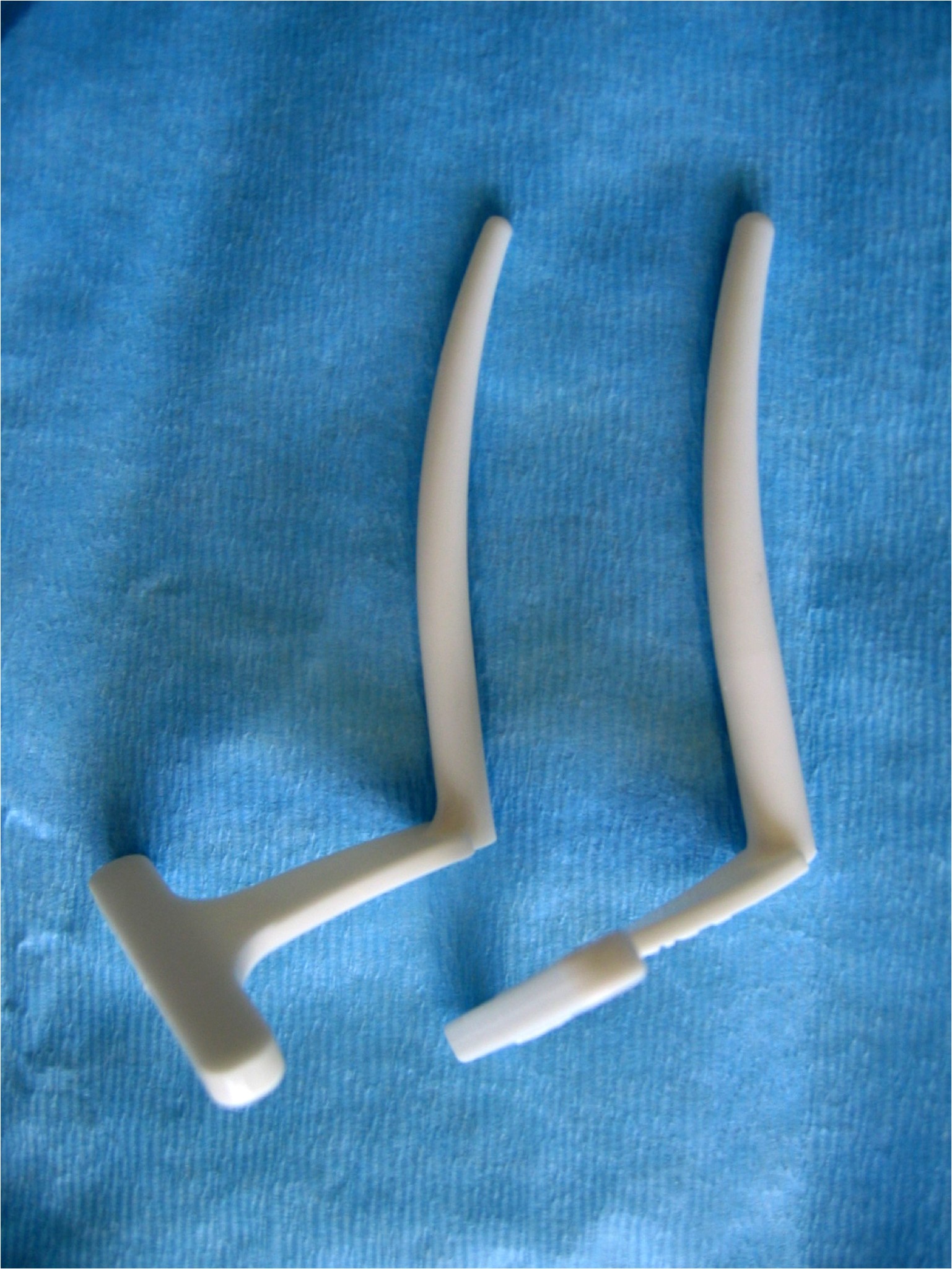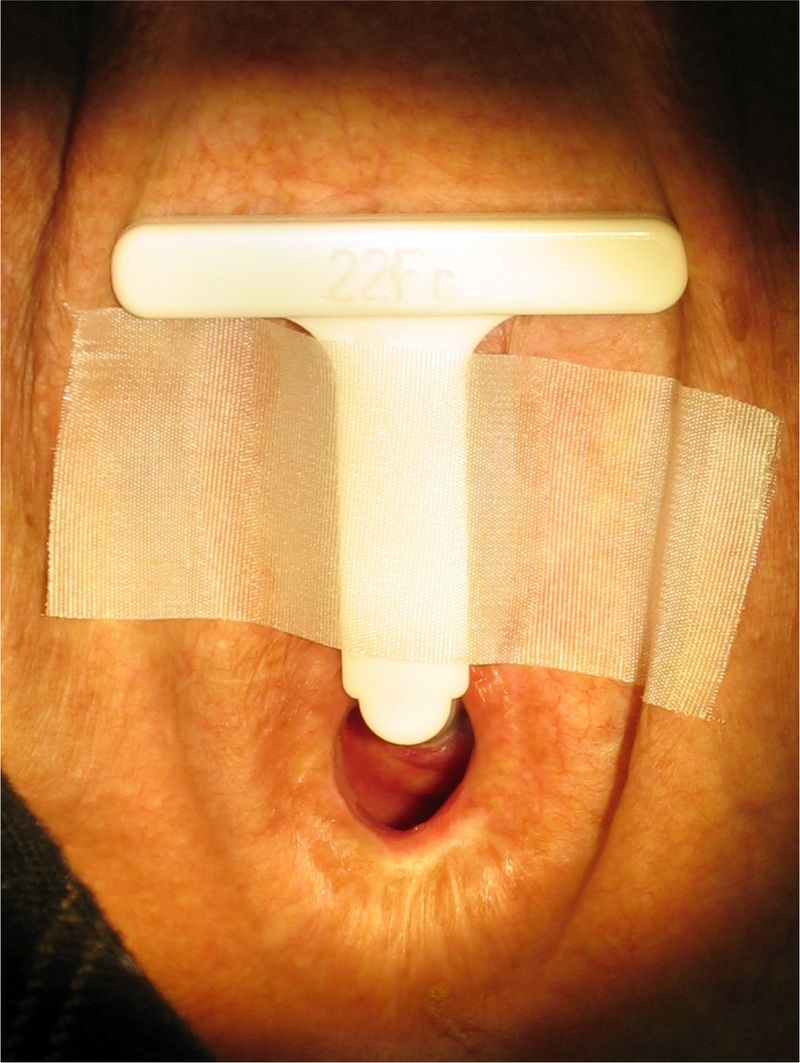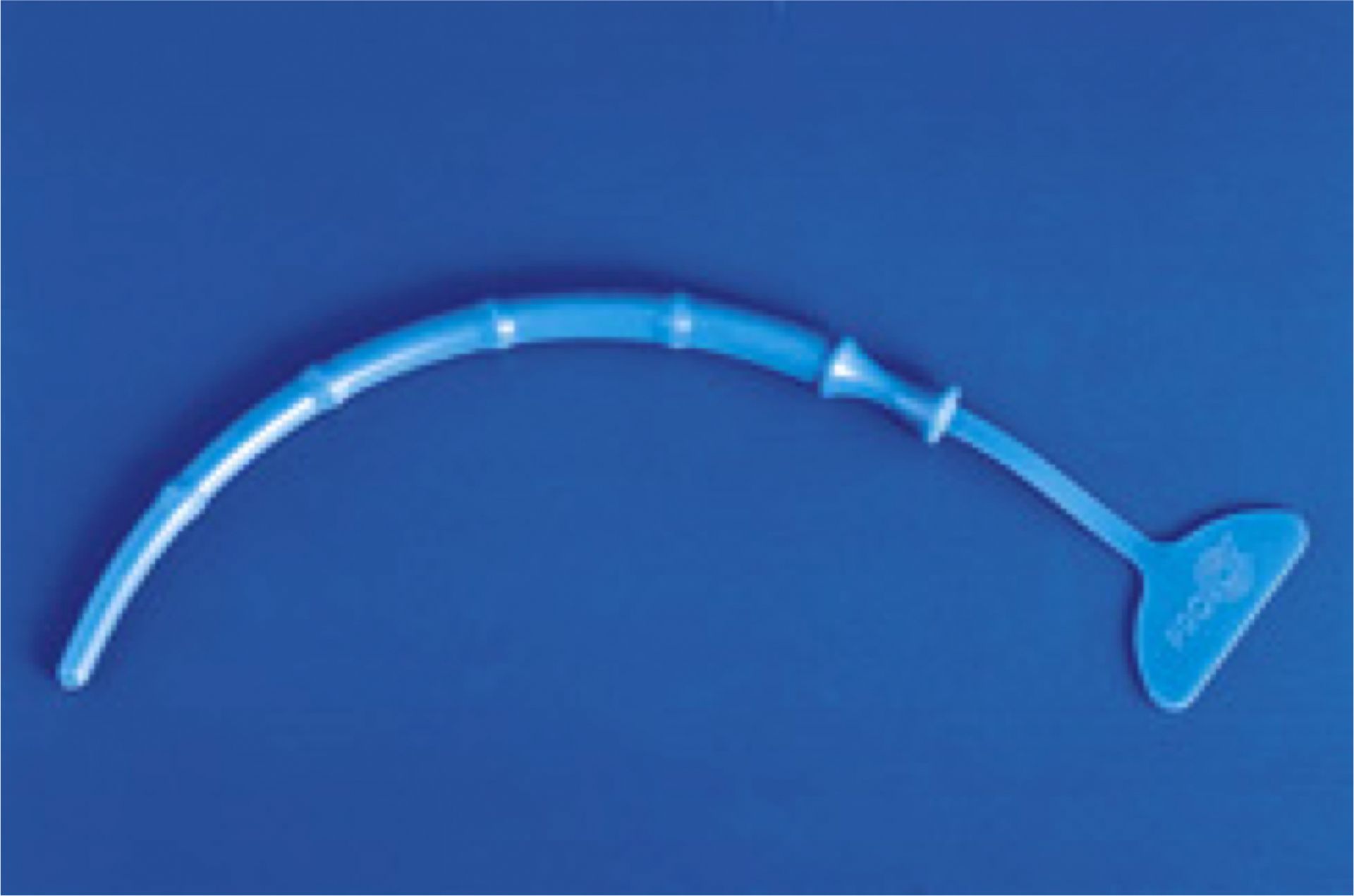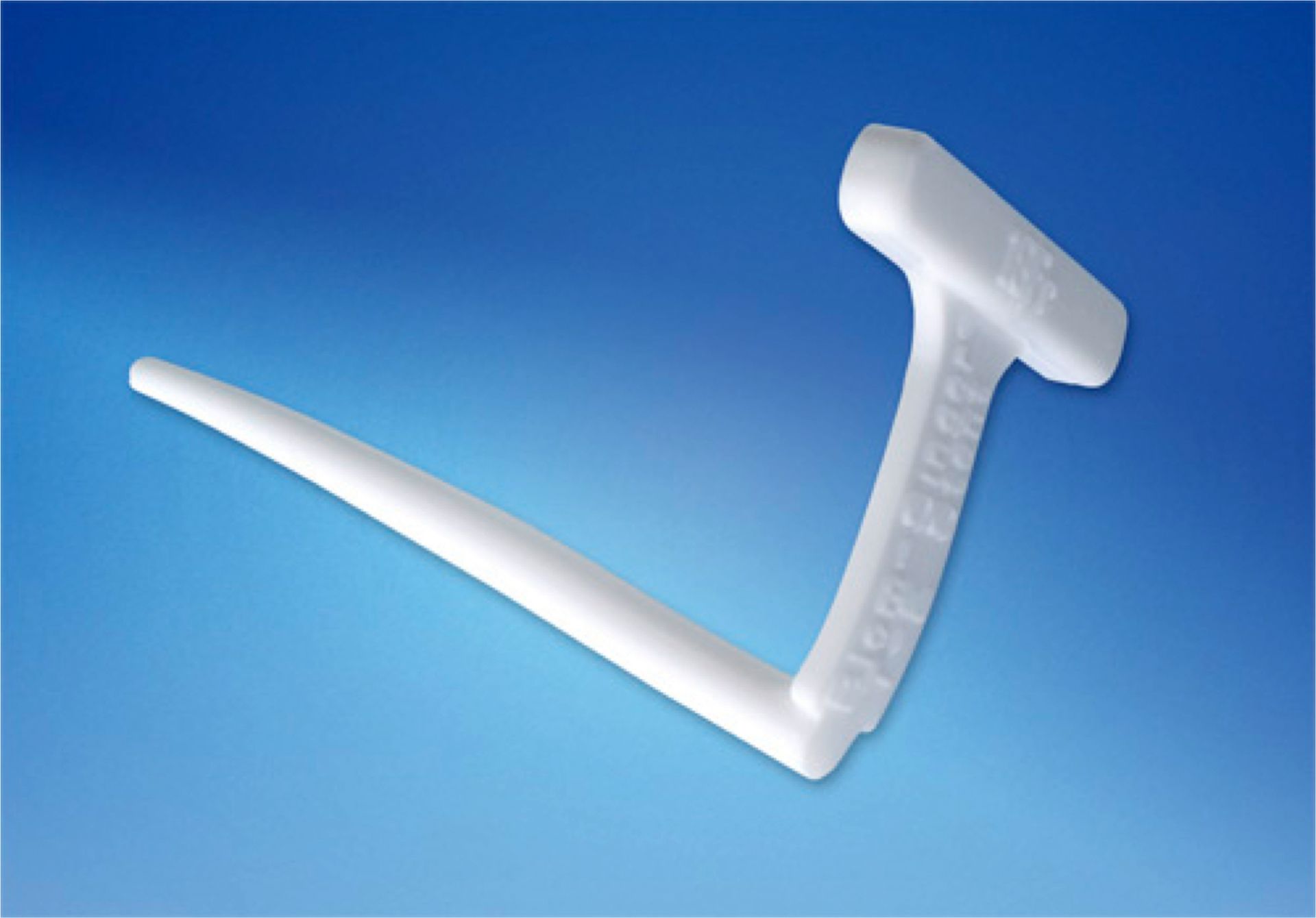Dilatators
Dilators perform several functions. On the one hand, they are used to stretch the esophagotracheal fistula slightly before a new voice prosthesis is inserted to make the process easier. It is rarely necessary to dilate the shunt for a routine voice prosthesis replacement. A second function is to temporarily close the shunt while the voice prosthesis is replaced (see fig. 1). When the dilator is in place and secured using sticking plaster, the "operator" has both hands free and the patient can swallow without aspirating. As the patient can usually tolerate this state for up to several hours, this removes the dynamics from the process of changing the voice prosthesis. In line with the management of complications, a dilator can stabilize a freshly recanalised shunt for up to several hours after a voice prosthesis dislocation before a new prosthesis is inserted. The insertion of a dilator in the shunt also provides information on the openness or closure of the shunt, and not rarely prevents the insertion of a voice prosthesis in a via falsa.
Dilators are made by various manufacturers and in various shapes and styles. We are showing some of them here, although this selection is by no means exhaustive.




